Forced leg positioning in different types of traumatic right hip dislocations: a – posterior, b – posterior, c – anteroposterior, 7 – anteroposterior
![]()
- Gradual rehabilitation after hip replacement surgery – the key to success
- Before the training
- Articulated knee and hip tunic TN6STP-02
- Description
- Jan and Korn orthosis
- How do I choose a size?
- Tubinger orthosis
- method of size selection
- How to choose and buy a hip brace?
- news
- Don't know what to choose?
- News
- ankle orthoses
- shoulder straps
- How arthroplasty is performed in sports injury center
- Rehabilitation after hip surgery
- Why is a bandage needed?
- Unilateral rigid device
- Brands: Which hip prosthesis is the best?
- Which implant is better suited for hip arthroplasty?
Gradual rehabilitation after hip replacement surgery – the key to success
Even surgery performed to the highest standards is of no use without proper follow-up care. Comprehensive rehabilitation after hip replacement – exercise, physical therapy and prevention of complications – allows to realize the full potential of this type of surgery. Without rehabilitation, there is a risk of persistent pain, lameness and limited mobility.
Before the training
After hip surgery, rehabilitation takes an average of three months. It consists of several phases, each with its own system of therapeutic and rehabilitation measures based on physical exercises and supportive treatments. Gradual treatment of the prosthesis segment can avoid complications, quickly eliminate swelling and pain symptoms, and accurately work out the limb so that function can be restored.
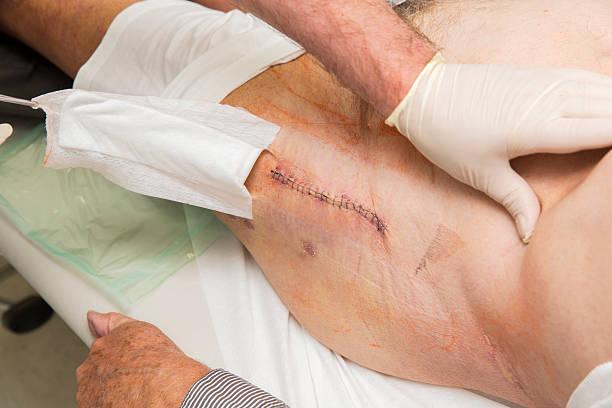
Stitch well and quietly for about three days after surgery.

We hope that you have given some thought to this device in advance.
The physical activity is planned and optimized by the rehabilitation therapist according to appointments and individual criteria. At home, you need to take contraindicated activities seriously, exercise strictly by the book, without forcing exercises, always come to the clinic for the scheduled check-ups, and in case of any pathological symptoms (pain, swelling, hematoma, etc.), immediately contact the attending physician.
Articulated knee and hip tunic TN6STP-02
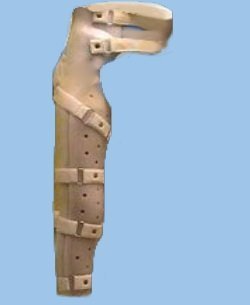
A tunic for immobilization, correction and relief of knee and hip joints, in inflammatory and degenerative diseases, in paralysis of various etiologies.
By using the orthosis, the load on the painful joint or the entire leg is significantly reduced and evenly distributed over the limb. Rehabilitation with the help of an adjustable splint shortens the recovery process many times over.
- Prospect Mira To order
- Zhukovsky To order
- Autozavodskaya Pod To order
- Pervomayskaya Pod To order
- Southwest signed To order
- To order Lublino
- Order online shop
 To Moscow from 250 rubles*
To Moscow from 250 rubles*  Within Russia from 249*
Within Russia from 249*
- bar
Description
The tunic is made in the form of a sleeve that covers the lower limb up to 1/3 of the mid-thigh and 1/3 of the mid-shin, with fasteners. Pan made from a household sheet of thermoplastic material (polyethylene - low density polyethylene, high density polyethylene, polypropylene) etc. by vacuum forming.
It is made from an individual plaster cast and is issued under the supervision of an orthopaedist.
- Spastic and flaccid paralysis and paresis of various etiologies, including cerebral palsy,
- In injuries of the ligament apparatus of the knee, hemarthrosis, arthritis, synovitis, bursitis and moderate valgus and varus deviation of the lower limbs.
Jan and Korn orthosis

This orthosis looks similar to the Wilensky splint, but is not attached in the lower third of the lower leg, but above the kneecap. The type of attachment restricts the child's freedom of movement. However, there are cases when the doctor prescribes this orthosis.
- It provides moderate hip joint abduction and promotes normal acetabulum development;
- has a design that belongs to the European standard for the treatment of hip dysplasia (the Vilensky splint is the Russian standard).
The main indications for use are: hip dysplasia; Residual effects after conservative hip dislocation and previously diagnosed Graf dysplasia type IIb.
How do I choose a size?
The brace is one size only, which can be adjusted by adjusting the length of the brace and the volume of the hip cuff/ring.
Tubinger orthosis

The product provides the most favorable positioning of the hip joint in hip dysplasia, promotes the correct development of the acetabulum and does not restrict the child's natural movements.
The orthosis adapts to the individual pelvis. Thanks to a thread system that looks like small beads, you can set the desired hip flexion angle and use the central brace to adjust the degree and angle of hip abduction.
- It is made of lightweight plastic so your baby's weight will not change too much with the device and you can easily hold your baby in your arms;
- simple, fast and secure closure with Velcro;
- with removable terry cloth shoulder pads that are comfortable for your baby;
- Waterproof so you don't have to take it off when bathing your baby.
Main indications: hip dysplasia in children in the first year of life (Graf types IIa and IIb); unstable or deviated hip joint (types IIc and IId).
method of size selection
- width of the strut. The required width is determined by the attending physician;
- Age of the child (up to 1; 2-5; 6-12 months). This is not a realistic estimate, as children of the same age can have different builds. Ideally, the doctor should be able to determine this as well.
How to choose and buy a hip brace?
You must agree the type and characteristics of the model with your doctor. You need to get the size right. The product must fit snugly around the hip joint for best results. Our manager will help you choose the right model, taking into account your figure, height and your doctor's recommendation and prescription.
Our consultants will be happy to help you choose an orthopedic fit.
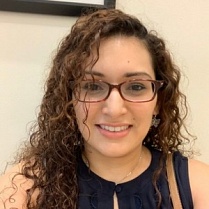
Maria Dmitrievna Lavrova
Medical education at Burdenko Voronezh State Medical University. NN Burdenko
Has been working with Orliman products since 2012, last training on Orliman products in 2018
'I like my job and the company I work for. The selection of orthopedic products gives me great pleasure!'

Ivannikova Arina Stanislavovna
Medical education at the Russian National Scientific Medical University named after Pirogov, 2010.
Has been working with Orliman products since 2017, last training with Orliman products in 2018.
'My first year in this call center has been nothing but joy. I do my job with quality and responsibility.

Ivanchenko Kristina Yaroslavovna
Izhevsk State Medical Academy 2009, Diploma in Medicine.
Has been working with Orliman products since 2013, last training on Orliman products in 2018
news
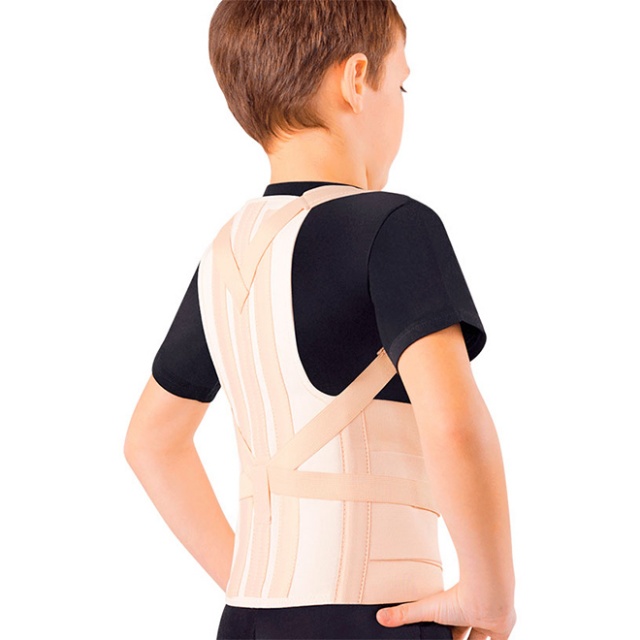
Pediatric Lumbosacral Brace - a product for the treatment of curvature.
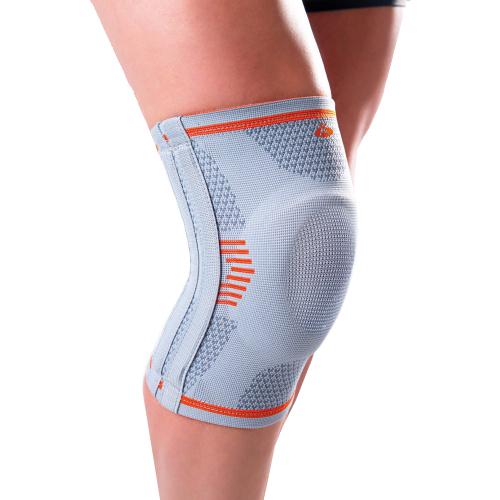
Learn how to keep your knee joints healthy.
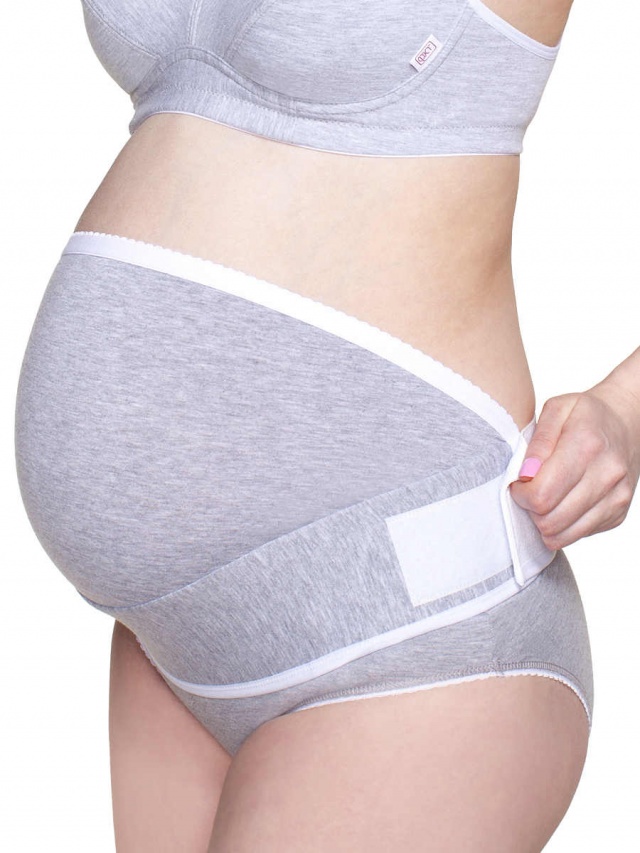
What models of prenatal dressings are there.
Don't know what to choose?
Our consultants will be happy to help you choose the right orthopedic products

Maria Dmitrievna Lavrova
Medical education at the Burdenko State Medical University in Voronezh. NN Burdenko
Has been working with Orliman products since 2012, last training on Orliman products in 2018
'I like my job and the company I work for. Choosing orthopedic products gives me great pleasure!'.

Ivannikova Arina Stanislavovna
Medical education at the Russian National Medical Research University named after Pirogov, 2010.
Has been working with Orliman products since 2017, last training with Orliman products in 2018
'My first year in this call center has been nothing but joy. I do my job with quality and responsibility.'

Ivanchenko Kristina Yaroslavovna
Medical education at the Izhevsk State Medical Academy in 2009.
Has been working with Orliman products since 2013, last training with Orliman products in 2018
'Great work that brings only joy. I don't regret becoming an orthotist. I really enjoy helping people!'

Alina Ivanovna Mironova
Medical education at Tver State Medical University in 2011.
News

Children's lumbosacral orthosis - a product for the treatment of curvatures.

Learn how to keep your knee joints healthy.

Which models of prenatal orthoses are available.
ankle orthoses
Ankle braces are used for orthopedic relief depending on the severity of the ankle injury or disease.
Semi-rigid immobilization splint
Made of non-stretch, flexible medical grade plastic, it allows the stabilization elements to be maintained in the prescribed position without moving them. The strut is reinforced with flat metal springs. This design feature prevents ankle injuries while standing or walking.
– In rehabilitation after ankle fractures, tarsal bones, damage to the intercondylar syndesmosis;
– In case of ligament injuries or instability of the ankle;
– For prophylactic purposes to relieve the ankle before long-term stress on the ankle (occupation, sport).

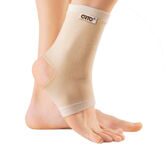
– Prevention and treatment of minor injuries (bruises, sprains);
– During rehabilitation after ankle or tarsal bone immobilization;
– To protect against hypothermia, for optimal thermal comfort
shoulder straps
The orthosis covers the shoulder, the collarbone region, the upper part of the shoulder blade, the shoulder joint and the upper part of the arm to the lower third. It allows easy fixation of the shoulder joint, clavicle and shoulder blade.
– For the prevention and treatment of bruises, partial ligament injuries of the shoulder joint, collarbone and collarbone-brachial joint;
– In rehabilitation after immobilization and operations on the shoulder joint;
– in habitual shoulder dislocations and to prevent relapses;
– In sports to warm up the joint before training.
How arthroplasty is performed in sports injury center
A hip prosthesis at the Moscow Sports Injury Center takes 1-2 hours. The anesthesia can be general or spinal - in this case the patient is conscious but feels nothing below the waist. An incision about 7-10 cm long is made on the side, the surgical wound is enlarged and closed.
All tissue and parts of the joint to be replaced are removed. In the case of a total hip replacement, these are the femoral neck, the femoral head and the acetabulum. The prosthesis components are attached with screws or cement. The orthopedic surgeon supervises the installation. After the examination, a drain is inserted and the wound is closed.
During the postoperative recovery period, the patient takes antibiotics, painkillers and the necessary supportive drugs. The sutures are removed after two weeks, and the patient takes an active part in rehabilitation.
Rehabilitation after hip surgery
The return to normal activity begins soon after the prosthesis and is gradual. A few hours after the operation, the patient is already sitting up in bed with his feet on the floor. After a day he is able to get up.
Strengthening exercises are performed to adapt to the prosthesis. Physiotherapy and physical therapy are also recommended. During this time, the involvement of relatives is particularly important – their arms will take care of the patient at home during the rehabilitation period.
Why is a bandage needed?
Hip injuries are simple, but treating them is problematic. The hip joint is the largest joint in the human body and is heavily used every day. When treating an injury to this joint, the doctor primarily prescribes medication and therapeutic treatments. While this treatment is effective, it cannot always completely rehabilitate the damaged organ. Treatment can be complicated by several factors.
- High risk of re-injury (if gymnastics is used for treatment).
- The complex structure of the joint.
- The damaged area is of considerable size.
- The cartilage tissue regenerates and heals very slowly.
Therefore, in most cases of such an injury, a hip orthosis is used. There are different types of orthotics, but typically patients with such injuries are prescribed a rigid immobilization device. Splints or casts cannot be effective in this case and are very uncomfortable. A bandage is the best solution for a hip injury. It tightly envelops the injured area of the body and limits the mobility of the joint, but still allows the patient to move. The orthosis not only contributes to faster healing of the joint, but also prevents re-injury.
The orthosis can be soft. In this case it is called a 'bandage' and is used for minor injuries where there is no need to stiffen the joint. Products with hard components (metal or plastic) are used to support the patient during the rehabilitation period after a serious injury.
Read more:Tunics are made from different materials and can be of different types. The price of the product depends on the quality, durability and manufacturer.
Unilateral rigid device
Hip orthoses can be unilateral. In this case, the construction consists of two parts that are connected to each other. The first part is attached to the patient's waist, the second to the thigh. There is a special hinge between the two parts. It has the task of regulating the movements of the patient. The hinge allows the leg to be raised, lowered and moved from side to side in a controlled manner. These products come in a variety of sizes, so it is best to consult your doctor before purchasing. He will help you to choose the correct size of the orthosis. These orthoses are recommended for the following purposes:
- Rehabilitation after endoprostheses.
- Recovery from another surgical procedure.
- Trauma to the femoral neck or femoral head.
- corrective osteotomy.
- rupture of a tendon.
- dislocation of a bone.
- fracture of a bone.
Rigid orthoses are recommended when partial or total immobilization of the patient is required for a period of time. Often these orthoses are equipped with additional attachments, straps and more rigid fixation devices.
An orthosis fulfills several important functions during rehabilitation:
- Reduces pain sensations;
- It strengthens the patient's hip joint;
- Reducing the stress placed on the injured body part.
Some models of orthotics are equipped with additional joints so that the degree of immobilization of the hip can be gradually increased or decreased.
Brands: Which hip prosthesis is the best?
The doctors at the OrthoMed Clinic only work with renowned manufacturers of hip implants. Today we have identified 4 main brands and recommend them to our patients with a clear conscience:
- Zimmer implants are American hip prostheses made of biocompatible materials that form a unit with human bone tissue when installed. Almost any pair can be formed with the acetabular components. The artificial joints themselves are robust and wear-resistant. The lifespan of the implants is more than 20 years.
- DePuy Synthes implants from Johnson & Johnson. The manufacturer has separate product lines for thigh and hip joint components so that the doctor can assemble the new joint himself. There are models for primary and revision prosthetics. The survival time of the implants is at least as long as that of the implants themselves.
- Smith & Nephew implants are products of a British company, known worldwide for the best innovations in orthopedics, but not very popular in the Russian Federation. The implants are made of zirconium-based alloys. They are stronger than CoCr alloys and fully biocompatible. Smith artificial hips are suitable for minimally invasive arthroplasty. The possibility of having to replace the implant is practically impossible.
- Aesculap implants are German systems that are highly wear-resistant, biocompatible, and have hypoallergenic components.

Which implant is better suited for hip arthroplasty?
Meeting the patient in the planning phase of the operation traditionally starts with the questions: Which implant for hip replacement is better – ceramic or titanium? Which brand? Do the clinic's doctors use cemented or cementless fixation of the artificial prosthesis?

- The ceramic/polyethylene couple is preferred by our doctors, but only if there are no contraindications. Otherwise we will consider other combinations.
- There are no significant differences in quality between brands – the choice of orthopedic structure is made by the doctor based on the patient's bone condition and the specific clinical situation. In any case, we only use foreign brands because only they have the required properties.
Prosthesis designs from Russian manufacturers quickly deteriorate due to insufficient strength of materials. You need less time to get started. This means that the patient will soon have to undergo surgery to implant a revision prosthesis, ie a replacement. And this is a more complex and difficult procedure for the body than inserting the endoprosthesis itself.
When preparing for each operation, we proceed individually. To evaluate the results of the work of our surgeons and Ruben Vachaganovich, you can look at photos and video reviews: implantation of prosthesis in femoral neck fracture, total arthroplasty and other cases.
This photo shows the result of a Smith & Nephew total hip replacement with the Polarcup cup, suitable for patients at high risk of hip dislocation, severe bone loss and acetabular defects. X-rays show a frightening picture, but the patient feels fine and leads an active life.
- Complete leg orthosis.
- Overnight orthosis for plantar fasciitis heel spurs.
- toe pads.
- ribbons for children.
- shoulder brace.
- Foot orthoses for valgus deformities.
- knee joint apparatus.
- Reviews of alloy holders.



